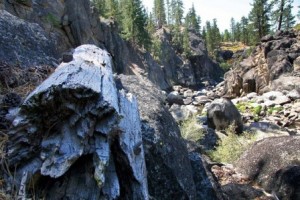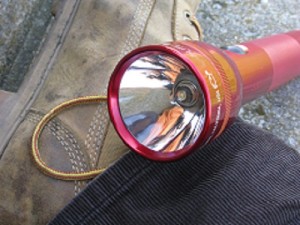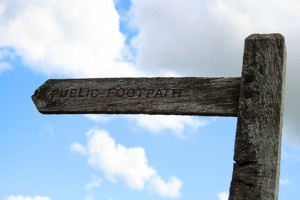This guest post was written by Charlie Curtis-Jones of Brentwoodradios.co.uk., who can offer expert guidance on the best radio communications device for the great outdoors.
 The ability to enjoy a wilderness experience often comes down to how well-prepared you are for wilderness survival. Things you normally take for granted, such as dry feet and clean water can make all the difference between experiencing a life-changing adventure and enduring misery. The items you place in your wilderness survival kit will vary depending upon where you’re going, what season it is and what your skill level is. Yet there are basics that every wilderness adventurer should have for proper shelter, safety and to meet basic needs.
The ability to enjoy a wilderness experience often comes down to how well-prepared you are for wilderness survival. Things you normally take for granted, such as dry feet and clean water can make all the difference between experiencing a life-changing adventure and enduring misery. The items you place in your wilderness survival kit will vary depending upon where you’re going, what season it is and what your skill level is. Yet there are basics that every wilderness adventurer should have for proper shelter, safety and to meet basic needs.
It’s smart to research your wilderness trip environment beforehand and have a good idea of upcoming weather to help you know exactly what to put in your survival kit. While you don’t want to weigh yourself down, you do want to have the basics necessary to safeguarding your health and well-being. Use this list to help you as you prepare your wilderness survival kit.
10 Basic Wilderness Survival Kit Items
- First Aid Kit. An official first aid kit can be purchased at a hardware or sporting goods store and will contain all you need to tend to the minor cuts and common injuries that can occur in the backcountry.
- Water Purification System. Clean water for drinking, cooking and washing cuts is vital to wilderness survival. Although there are primitive ways to purify water, a small water purifying bottle or pump will save you time and energy.
- Knife. A non-folding, 3 inch blade with a protective cover can help you enjoy harvest meals and snacks, cut kindling for a fire or gather materials for shelter. A good knife with a sharp blade is one of the most critical survival tools to have.
- Water-Proof Matches. It’s wise to carry a lighter with you, but those can malfunction or run out of lighter fluid. Water-proof matches serve as a secure backup for cooking and staying warm.
 Flashlight. A flashlight serves two purposes in the wild: providing light after dark and sending signals. To do the latter, you’ll need to know basic Morse code.
Flashlight. A flashlight serves two purposes in the wild: providing light after dark and sending signals. To do the latter, you’ll need to know basic Morse code.- Compass and Map. It’s easy to get turned around in the wilderness, even if you’re familiar with the area. Keep yourself headed in the right direction and in safe areas with a compass and map.
- Wool Blanket. The temperature can get chilly after nightfall, even during the warmer seasons. A thin, wool blanket can keep you warm and dry, while helping you get the good night’s rest you need.
- Communication Device. It’s vital to be able to call for help, especially if you’re alone. Portable communication, such as a two-way radio can give you emergency access to the outside world if disaster strikes.
- Mess Kit. Most sporting goods stores sell mess kits that fold nicely into one compact package for easy storage. Look for one with a basic pot/bowl, cup and utensil combination.
- Rain Poncho. There’s nothing more uncomfortable than having to hike and sleep in clothes that are soaking wet. A long, thick, hooded rain poncho can be a lifesaver and doubles up to keep your gear dry when you’re not wearing it.
 Naturally, you’ll hope to not have to use any items in an emergency scenario while on your wilderness adventure. But these foundational survival kit items will help you care for your needs and provide a sense of security should any critical situations arise. Even if they don’t, you’ll be able to stay dry and warm, take care of minor cuts and bruises, and find your way around without any problems. While this list helps you meet some of your basic needs, you’ll want to add more items to it based on the specific needs you’ll face on each adventure.
Naturally, you’ll hope to not have to use any items in an emergency scenario while on your wilderness adventure. But these foundational survival kit items will help you care for your needs and provide a sense of security should any critical situations arise. Even if they don’t, you’ll be able to stay dry and warm, take care of minor cuts and bruises, and find your way around without any problems. While this list helps you meet some of your basic needs, you’ll want to add more items to it based on the specific needs you’ll face on each adventure.

Sure. I will keep this in my mind when it comes to camping in the wilderness. Your blog post is really helpful! Cheers and keep up the great work!
Perfect list! Flashlight is a must..especially a decent tactical flashlight you can never go wrong with one.
I think you should add one thing on the water purification system. All you need is iodine tablets and that will purify your water for you.
Great List! Thank you so much for sharing.
The science for kids experiment writing is absolutely one of the
best i’ve seen today.
Great article! The tips will sure come in handy for my upcoming WV camping trip
Fantastic short article, I enjoyed the frs\/gmrs two-way radio reviews part
Thank you for the tips! What do you prefer? A hammock or the basic tent? Because hammock looks cool, and it is lighter than the tent.
Great list! I have only used lighters so far in the wild, and I never knew that you there are such things as waterproof matches. I am going to get some. It will be nice to know that even when it gets soaking wet I am going to be able to light a fire.
These are great! For the techies, there are portable USB chargers and solar chargers out there for their travel gadgets.
great post! live in woods 😀
http://diaviosi.blogspot.gr/
Greek blog about camping, hiking in greeece, stay tune we will rise up..
And the Greek its perfect to stay out all day for camping
Good list –A reminder that I need to put together the Survival List for Glamping (10 essentials, like chandelier and corkscrew). I also carry spare batteries for my Iphone — where I hike there is still decent reception, thanks to a good Verizon network — and I think a smartphone is really essential. Some of the apps, like the lightning strike notifier, the trail maps with GPS, the odometer and of course the cell phone itself I find indispensable. Thanks for the postin’!
Shelter is extremely important and considered to be one of the 10 essentials. A “communication device” is optional but always a good idea, especially GPS ones like SPOT. Most people bring cell phones even though places you’d tend to get lost don’t have cell reception (or its spotty at best). For water purification, I really like the Sawyer Squeeze water filter. It’s easy to use, no moving parts, and super lightweight.
What about a tent? Even a small pop up tent is relatively small to carry. And definitely food, like cuppa soups or dried foods, porridge etc
A very good basic list to get started with. The biggest thing left out is being in a positive mental state of mind. Survival is really based solely on that one principal. We saw this video awhile back about the psychological aspect of survival and it is one of the best precepts we have seen by Ray Mears. The video explains the principals of having the right mind set during any and all situations, whether its just a backpacking trip or a complete survival situation.
You can see it about mid way down on the welcome page here – http://www.doomsday-survival.info
its a great video and I recommend everyone watch it and take notes.
Hello Guys,
would you like to purchase all of 10 items at lowest prices??
Visit Camouflage.ca
I think this article covers the basics quite well. I was curious as to what the author thought of the reflective survival tents that can fold up into the back pack?
This is a great starter list on what to bring for a safety net. I was wondering if you could provide some ideas on what you consider the better communication equipment? Have you found that a certain brand of two way radios work better then others things like that? Great article and straight to the point.